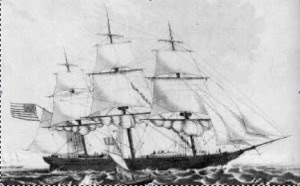 |
| David Nathan Thomas (1820-1888) |
Over the next few weeks, I will be posting a biography of David Nathan Thomas. It was written by David's great-great granddaughter, Helen Rigby, and is reproduced here with her permission. Helen spent years collecting the information here, and visited and researched all the Thomas homes, from Wales, where David was born, to Utah and Arizona, where he died and is buried. We are all very grateful to Helen for her work, and also wish to thank her husband Jay and her sister Katie, who were a great help on the project.
I first met Helen several years ago when she found, through a visit to this blog, that my branch of the family had pictures of David Thomas and his second wife Adeline Springthorpe Thomas. It was a great privilege to get to meet Helen and work with her on placing a gravestone for Adeline Spingthorpe in Manti, Utah.
* * *
A History of David Nathan Thomas
and his wives,
Mary, Adeline & Frances
Written and compiled by Helen Price Rigby
March 2011
* * *
David N. Thomas
Born: 22 August 1820, Carmarthenshire, South Wales
Christened: 18 February 1821, Llangadog, Carmarthenshire, South Wales
Died: 14 August 1888, St. Johns, Apache, Arizona
Married Mary Howells: 5 November 1842, Caepantywyll, Merthyr Tydfil, Wales
Married Adeline Springthorpe: 5 September 1862*, Nephi, Juab, Utah
Married Frances Springthorpe: 20 February 1871, Endowment House, Salt Lake City, Salt Lake, Utah
* The date for this marriage is disputed, but no evidence has been found to prove or disprove it.
* * *
David Nathan Thomas
South Wales, 1820-1862
His christened name was David Thomas. There were so many others with the name "David Thomas" that it is said that he took his mother's maiden name of Nathan as a middle name; however, on some of the records I have found, he only used the initial
N. I don't think it was ever officially changed to David Nathan Thomas, but for clarity purposes I will use David Nathan Thomas as his name.
* * *
And that's all for today! To be continued...
Part 2: Life in Wales.
Part 3: Family joins Church; gets ready to go to America; Mary dies.
Part 4: Emigration to America.
Part 5: Ship Voyage; The Thomas Family Meets Adeline.
Part 6: Arrival in America, Castle Gardens, Crossing the Plains.
Part 7: The Down-and-Back Companies.
Part 8:
Part 9:
Part 10:

















